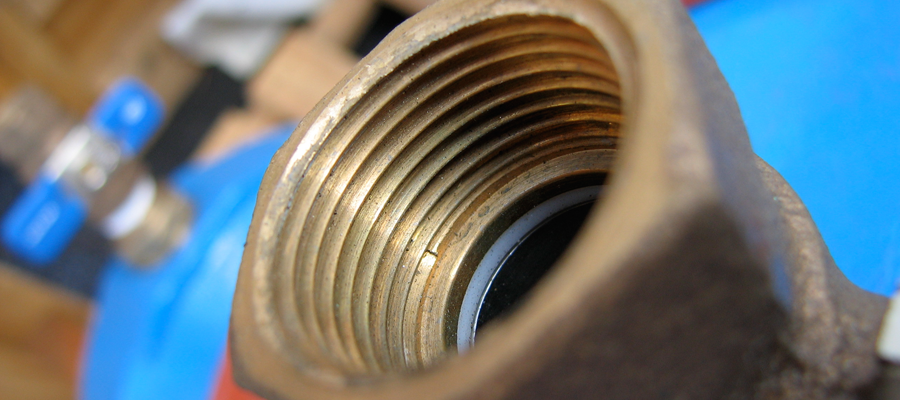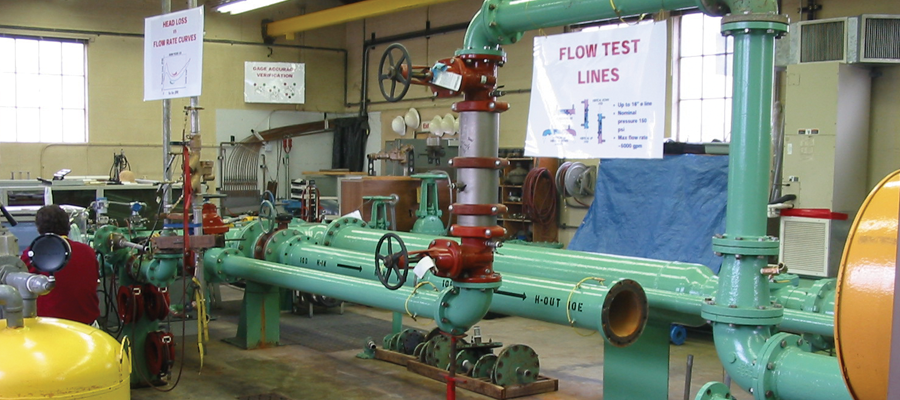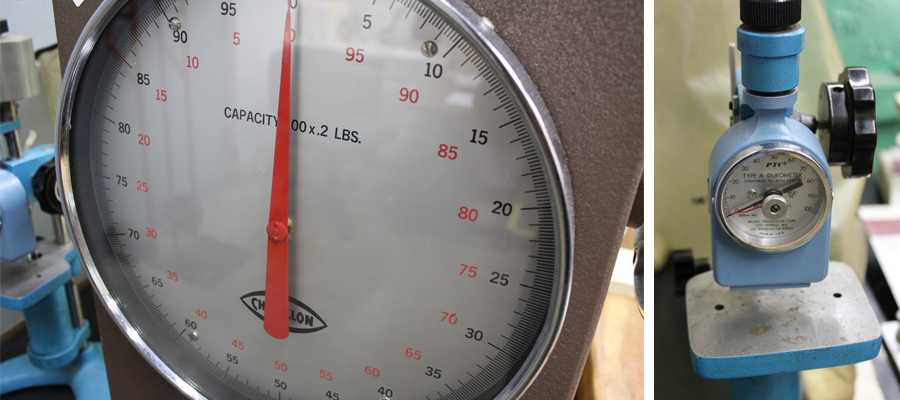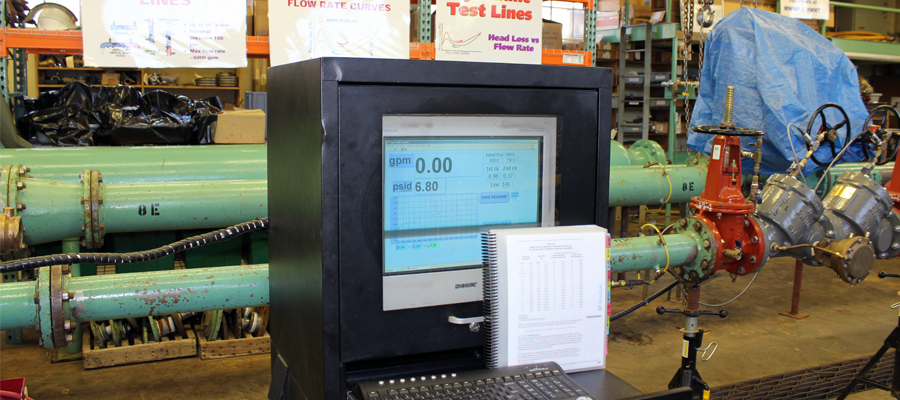

the Approval Program
There are several different standards for backflow prevention assemblies that are acceptable for different applications and different jurisdictions throughout North America. Some of the more commonly mentioned listings are IAPMO (International Association of Plumbing and Mechanical Officials), ASSE (American Society of Sanitary Engineering), CSA (Canadian Standards Association), UL (Underwriters Laboratory) and FM (Factory Mutual). These listings require a laboratory evaluation in accordance with their respective performance standards but none require a field evaluation. The ASSE and CSA standards offer an optional field evaluation but it is not required to gain their respective listing.
The USC Foundation for Cross-Connection Control and Hydraulic Research is the only approval or listing agency that requires a field evaluation prior to an assembly being listed or approved.
The laboratory testing for ASSE, CSA, IAPMO and USC are fairly similar. The main difference is the requirement for a one-year field evaluation that only the USC standard requires.

USC Foundation Laboratory
About the Lab
Email: fccchrlab@usc.edu
Phone: 323-442-0470
About the
Approval Program
Download Brochure
For additional copies you may
contact the Foundation Office
Questions about the Approval Program
Submit a Question
Evaluation Request
Submittal forms for
- Backflow Prevention Assemblies
- Shutoff Valves
- Field Test Kit
- Enclosures
- General
Evaluation Fees
- Schedule of Fees
Field Test Sites
- Become a field test site
- Letter of acknowledgment
The USC Foundation’s current standards for backflow prevention assemblies are contained in Chapter 10 of the Manual of Cross-Connection Control, Tenth Edition. These performance standards require that backflow prevention assemblies successfully complete both a laboratory and field evaluation under the direct supervision of the USC Foundation’s staff. There are currently no other standards that require both a laboratory and field evaluation in order for the assembly to become approved or listed.

During the laboratory phase of the Approval Program, the Foundation works closely with the developer of the backflow prevention assembly in order to facilitate a smooth flow through the evaluation process. Although the Foundation engineers attempt to assist the manufacturers in moving through the Foundation’s work flow, the Foundation does not actually do design work for a manufacturer. Once a particular make, model and size has successfully a completed each aspect of the laboratory phase of the Approval Program set forth in the Standard, it is released to the field evaluation phase of the Approval Program.
Cycle systems are used during the laboratory evaluation phase of the Approval Program in order to cycle the assemblies through a specific set of operating conditions such as: pressurization, depressurization, backpressure, re-pressurization, etc. For experimental purposes, the system can be programmed in a number of different ways in order to simulate a variety of field conditions which may be encountered during the field evaluation phase of the Approval Program. This helps the manufacturer to make design improvements before an assembly reaches the field evaluation phase,thus saving time and money.
Manufacturer
Information
- Non-Toxicity Documentation
- Approval Renewal Review
- Non-Toxicity Documentation
- Approval Renewal Review
Evaluation Policies
10-001-R1 Strength of Body Test
12-001 Corrections to the Standard 14-001 Shutoff Valve Submittal
14-002 Shutoff Valve Marking
14-003 Change Assembly Approval 18-001 Corrections to the Standard 22-001 Bodies and Covers
...30% do not pass the field evaluation the first time through. This means that the assembly has completed the laboratory evaluation and is, most likely, listed by other listing or approving agencies when it fails to comply with the USC Field Evaluation Phase of the Approval Program.

The field evaluation phase of the Approval Program is the most critical, since no amount of laboratory testing can simulate actual field conditions. Of the assemblies that successfully complete the USC Laboratory Phase of the Approval Program, roughly 30% do not pass the field evaluation the first time through. This means that the assembly has completed the laboratory evaluation and is, most likely, listed by other listing or approving agencies when it fails to comply with the USC Field Evaluation Phase of the Approval Program.
During this phase of the Approval Program, the manufacturer places at least three of each model and size of backflow prevention assembly in acceptable field locations. It is the responsibility of the manufacturer of the assembly to find suitable field locations and have the assemblies installed at their expense.
The field evaluation phase of the Approval Program allows the Foundation's engineering staff to field test the units under realistic conditions, where assemblies may be subjected to a variety of hydraulic conditions such as backsiphonage, backpressure, water hammer, continual cycling, and a variety of water conditions. The staff tests these assemblies on a nominal thirty-day schedule.
Even though the 12-month period does lengthen the process, an assembly’s time in the program depends on the performance of the assemblies themselves.

When a particular model and size has successfully completed both the laboratory and field evaluation phases of the Approval Program, according to the Standard, it is granted the Foundation’s approval and is placed on the List of Approved Backflow Prevention Assemblies.
The manufacturer is responsible for locating suitable field sites in compliance with the field site criteria contained in Chapter 10.1.2.1.3, Selection of Field Locations of the Manual of Cross-Connection Control, Tenth Edition. All potential field test sites must be submitted to the USC Foundation for review to ensure that they conform to the criteria. The manufacturer is then notified which of the submitted field test sites comply and the manufacturer may then proceed to get the assemblies installed at these locations.
A common misconception is that the Foundation only allows field test sites in the general southern California area but there is no such limitation in the Standard. The manufacturer is free to select field sites anywhere. However, to minimize the amount of travel time necessary for the Foundation’s staff to field test each location on a monthly basis, the manufacturers tend to locate the field sites within a 500-mile radius of the greater Los Angeles area. Within this range of field sites there are widely varying water conditions, pressures and applications.
All the laboratory and field-testing to the USC Standard is conducted under the direct supervision of the USC Foundation’s Engineering Staff.

This is where all of the controlled evaluations of the backflow prevention assemblies are conducted. The laboratory occupies a renovated pumping station of the Department of Water and Power in the City of Los Angeles.
The Laboratory is quite versatile, having the capability of testing backflow prevention assemblies as small as the 1/4” size and as large as the 16” size, encompassing flow rates of up to 5000 gallons per minute (GPM).
The Foundation Laboratory also has the ability to test the same sized assemblies at elevated temperatures (up to 210 F) at normal operating pressure (up to 175 pounds per square inch {psi} and a flow rate of 50 GPM) with the Foundation’s thermal loop. This system is fully automated to record temperature and pressure readings for as long as seven days.
The Laboratory is equipped with a high performance vacuum system which is capable of pulling a vacuum of 30” Hg in the system’s storage tank.